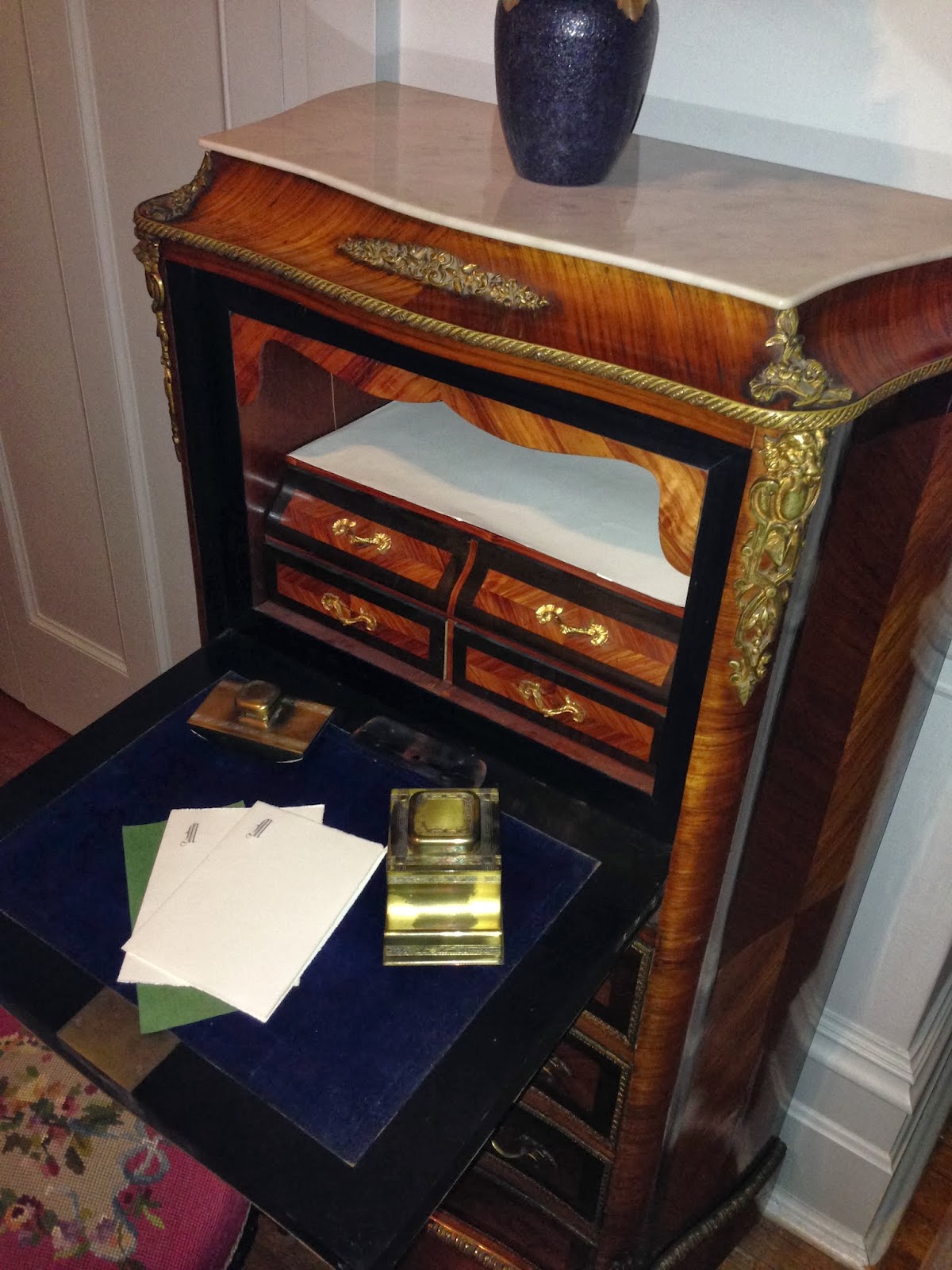Parkwood has many smoking accessories in our collection. Everything from humidors to a myriad of varied ashtrays. Some of the items are evidently more masculine, while others have an overt feminine quality. Adelaide McLaughlin, from all accounts of our knowledge did not smoke, but all five of the McLaughlin girls did. Smoking was a social past time and women were marketed too, especially the "new" woman who emerged in the 1920s, as confident and carefree, and smoking defined this image. Marketing firms also took to employ female celebrities, like Amelia Earhart, who helped market to female vanity, and expose the slimming attributes of smoking to the new 20th century gal who had thrown away her corset, but needed to maintain her slim figure to fit into the new styles that we equate with the flapper.

As this part of the blog is to look at items within the collection that the casual visitor may not see/notice, today I have chosen this gem. A small wooden box that sits on the writing desk in the Sunroom.
 The box, a small burr amboyna veneer boasting boxwood and ebony stringing, opens with a domed lid on a brass hinge to reveal a brass ringed, mahogany cigarette holder. When opened the cigarette box plays a short,
The box, a small burr amboyna veneer boasting boxwood and ebony stringing, opens with a domed lid on a brass hinge to reveal a brass ringed, mahogany cigarette holder. When opened the cigarette box plays a short, music box version of Mozart's Piano Sonata No.3.
On the bottom of the box stamped into the mahogany base is the word Austria.There is adhesive residue in a perfect rectangle indicating that the sticker that may have been applied at some time indicating the manufacturer, or perhaps the store where the box was purchased from, has fallen off long ago, leaving that information a mystery.
One can imagine, sitting at the desk in the Sunroom, composing a letter or working on a small project, reaching for a cigarette and working away while Mozart, although a tinny sounding version rings out, in the background.




